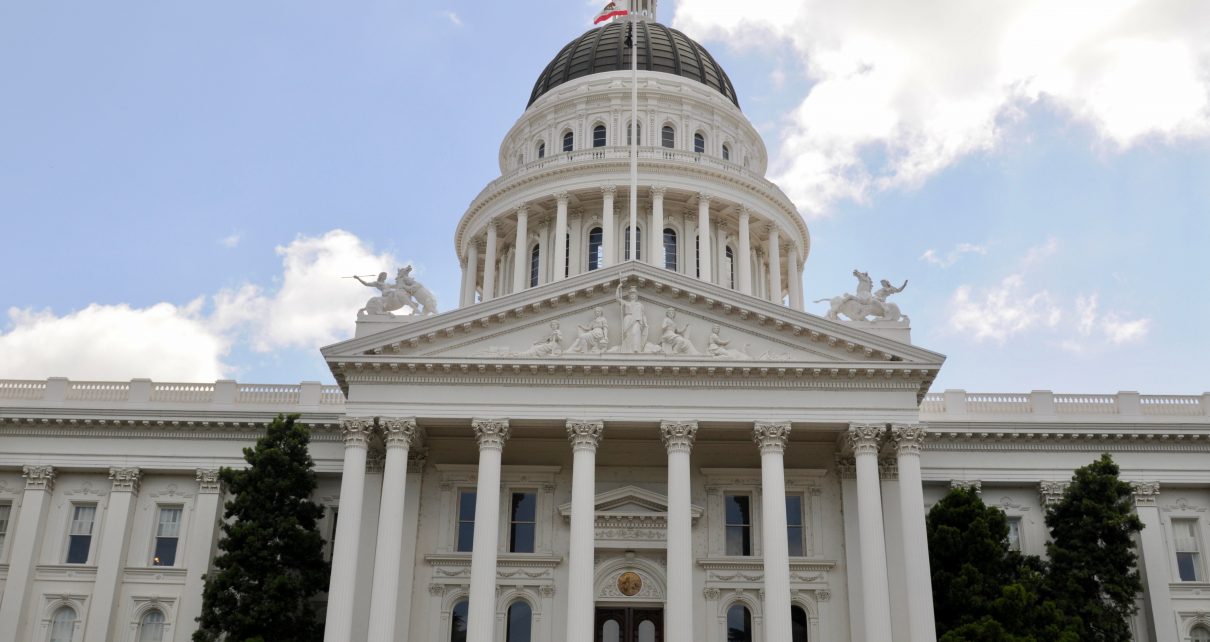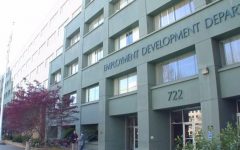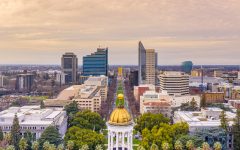
State Capitol Building. (Photo: Kevin Sanders for California Globe)
California’s EDD Continues to Borrow Hundreds of Millions – about $13 million PER DAY – To Meet its Obligations
Even before the pandemic, the EDD was awful
By Thomas Buckley, November 28, 2022 2:30 am
Though much of the Sacramento bureaucratic blob was exposed as the simultaneously incompetent and corrupt menace it is during the pandemic, one agency stood apart by proving itself the most inept and cruel organization in the capitol – the Employment Development Department.
Countless true tales of its heartlessness, rank stupidity, inability to tell real from fake, and sheer nastiness circulated throughout the duration – and after – the wrath of COVID (in case a reminder is needed, as the Globe reported here and here and here and, well, many many more.
It now appears that the pandemic bungle-fest was not what could be classified as a “one-off” COVID-related event, but the culmination of decades of mismanagement, shoddy oversight, and continuously farcical internal processes.
From seeing itself primarily not as a claimant benefit agency but tax collection outfit – to having a customer service policy of not having a customer service policy – to technology older than the word technology, the EDD has had problems for years and now a federal Department of Labor review of the agency’s unemployment insurance (UI) benefit trust fund (the account employers pay into) raises further questions about the stability and capability of the system as the fund’s solvency level is zero.
California is one of only eight states (and the Virgin Islands) to enjoy that dubious honor – others include: Colorado, Connecticut, Illinois, Minnesota, New Jersey, New York, and Pennsylvania.
trustFundSolvReport2022It cannot but help to be noted that these “in the red” states are all politically “deep blue,” as reflected by the map on the cover the report (see above.)
According to the latest “State Unemployment Insurance Trust Fund Solvency Report,” the state still owes the feds more than $18 billion against a trust fund on-hand balance of about $600 million. The report also shows California has an “advance (from the feds) per covered employee” amount of more than $1,400. The national average is $353 and most states have a figure of $0.
In 2019, the entire national UI trust fund debt whittled down to nothing from a high of $38 billion in 2011. The pandemic pushed the overall national debt up to $46 billion, of which, at its comparable height, California owed more than half, or about $24 billion. While the specifc numbers have lowered, the state still owes about the same as the rest of the nation combined (you can see the entire report at the bottom of this article.)
It should be noted that, even using the EDD’s own lowball number of $20 billion lost by the agency to easily preventable fraud, let alone the more accurate estimate of $30 billion, the state would have no debt to the feds if it had acted earlier to at least slow the massive pandemic benefits rip-off. In turn that would mean California businesses would not be facing a per-employee unemployment annual tax surcharge of at least .3% to be paid over the next seven years.
While pandemic-related funds were loaned interest free, that is the first time the state has been able to borrow Title XII (the federal unemployment backstop fund that existed long before the pandemic) funds interest free since 1990 due to its longstanding unemployment insurance financial issues. Only a few other states, such as Illinois, have had that problem going back more than 30 years (the number of states – 20 this year – who can borrow interest free varies from year-to-year, depending upon their financial status and history.)
That means that the state’s post-pandemic borrowing does incur interest and while in May California made a nearly $2 billion principal payment to the feds, it still had to pay another $335 million in interest in late September, before the close of the federal fiscal year.
Since making the May payment, the state has continued to borrow federal dollars. According to this Department of the Treasury website – the EDD just this month has borrowed another $284 million – a clip of about $13 million PER DAY – to meet its obligations. So far this fiscal year, the state has racked up $41 million in interest alone and paid exactly zero of that back.
Michael Petersen, spokesman for the federal Department of Labor confirmed that despite the agency’s financial woes, the EDD is and will remain able to meet its obligations to those currently receiving unemployment benefits and/or about to apply for them.
However the decades-long issue does call into question exactly why the agency has been run so badly for so long.
Long considered a career graveyard by Sacramento insiders, the EDD has – for decades – failed to modernize, failed to consider customer service, failed to keep up internal morale, all the while being a source of political tension, impotent as that may be as the legislature and successive governors have done kittle if anything to address the problem.
One of the root causes of the instability of the EDD is its funding method, said unemployment insurance expert Mark Duggan, the Trione Director of The Stanford Institute for Economic Policy Research (SIEPR) and The Wayne and Jodi Cooperman Professor of Economics at Stanford University.
When it comes to unemployment insurance tax rates, California has some of the highest in the nation. But it also has one of the lowest “taxable income” amount, an amount that has not changed since the 1980s. Depending upon whether the company has had significant layoff and/or other issues, California business pay between 1.5 and 6.2 percent of taxable income per employee (typically it’s about 3.4 percent.)
But that state only considers the first $7,000 earned annually to be taxable for unemployment insurance purposes. That means a typical employer will pay about $230 per year for the seasonal part time worker making $500 a month and the same amount for the CEO making $500,000 per year.
While the CEO could receive $450 per seek for 26 weeks if laid off, the lower wage employee – on whose behalf the same amount was paid into the system – would receive a tiny fraction of that amount if laid off.
“Higher wage workers are getting (thousands of dollars worth of) free insurance,” Duggan said. “The tax is the same but there is a massive benefit difference.”
The fact that the taxable base rate has not gone up in decades combined with the fact that the benefits offered have increased markedly leaves the system extremely vulnerable to economic uncertainty.
Duggan said it would be far more stable – and fair – if the $7,000 base were raised to something more in keeping with current economic realities while concurrently lowering the actual tax rate paid. This would not increase actual employer costs but would be a stabler source of income and justify the large benefit payout differences.
Why this has not been done he has no idea, Duggan said, especially considering the potential bipartisan political popularity of being able to say publicly that you are lowering taxes (one side of the aisle) while not costing the state any revenue (the other, currently much more powerful side of the aisle.)
Multiple experts and officials have called the EDD essentially a “tear down” that needs to be replaced from scratch. During the unsuccessful recall campaign against him, Governor Newsom briefly made loud noises about serious reform, as did the Democrat-held legislature. Nothing substantive has been done and even a bill creating a citizen’s oversight board was turned back.
Gov. Newsom has said very little and done even less since, and the EDD keeps borrowing money to stay afloat.
Why the agency is political kryptonite – especially when wholesale reform would be so popular with the public – is a mystery, though it would be remiss to fail to note that the current situation does benefit some: the agency employees who can stay blithely enmushroomified in their cubicles and the well-connected lawyers and consultants and tech experts etc. who are paid a great deal of money to keep applying Band-Aids, plugging leaks, bailing water, tidying up messes, and putting out fires.
It is as if the EDD was a ship that keeps hitting the same iceberg purposefully and repeatedly – but somehow won’t sink.
It just doesn’t make sense.
The Globe reached out to the EDD for comment, but as per usual, the EDD did not offer any comment, despite having said it would do so, and being given additional time to respond.
Here are the questions they declined to address, including a pretty basic one:
Can people expect to get their benefits if they file a proper claim?
Additional questions included:
How did this happen and what is being done to address it?
Is it still expected that the UI employer tax surcharge will go forward to pay for the shortfall?
California accounts for about 13 percent of the nation’s population, but accounts for more than 40 percent of the UI funds owed the feds – why?
Has any EDD employee been terminated for the pandemic problems?
Has the EDD upgraded its technology yet?
The EDD has not met solvency standards (able to borrow without interest) since 1990 and is one of only 9 states to have a trust fund solvency rating of Zero – explain
The report is extremely unflattering to the EDD – do you differ with any of its claims?
- Biden Speech Showed He is an Incompetent, a Thief, a Liar and Personally Hateful and Vicious - July 24, 2024
- Public Money for Teacher Housing - July 24, 2024
- A Clown Car Conspiracy - July 22, 2024





Interesting that California and EAST California (aka Colorado) are two of the eight that are upside down… proof that you can’t give all the free shtuff to everyone forever without significant adverse impacts to the economy… and beyond…
I am sick of everything being blamed on covid; it wasn’t covid, it was the stupidity of the so-called “leaders” that put us in this mess. CA willy-nilly gave away the bank, even to lifers in the penitentiary and out-of-state residents! There was no earthly reason to shut down the economy, especially for a virus with a 99.8% recovery rate! We were lied to continually by Gov Gruesome Newsom and his underlings, about the virus and the death count. A friend died of a massive infection from surgery, but since he “tested positive”, he died of covid. NO, he died WITH covid (maybe)!